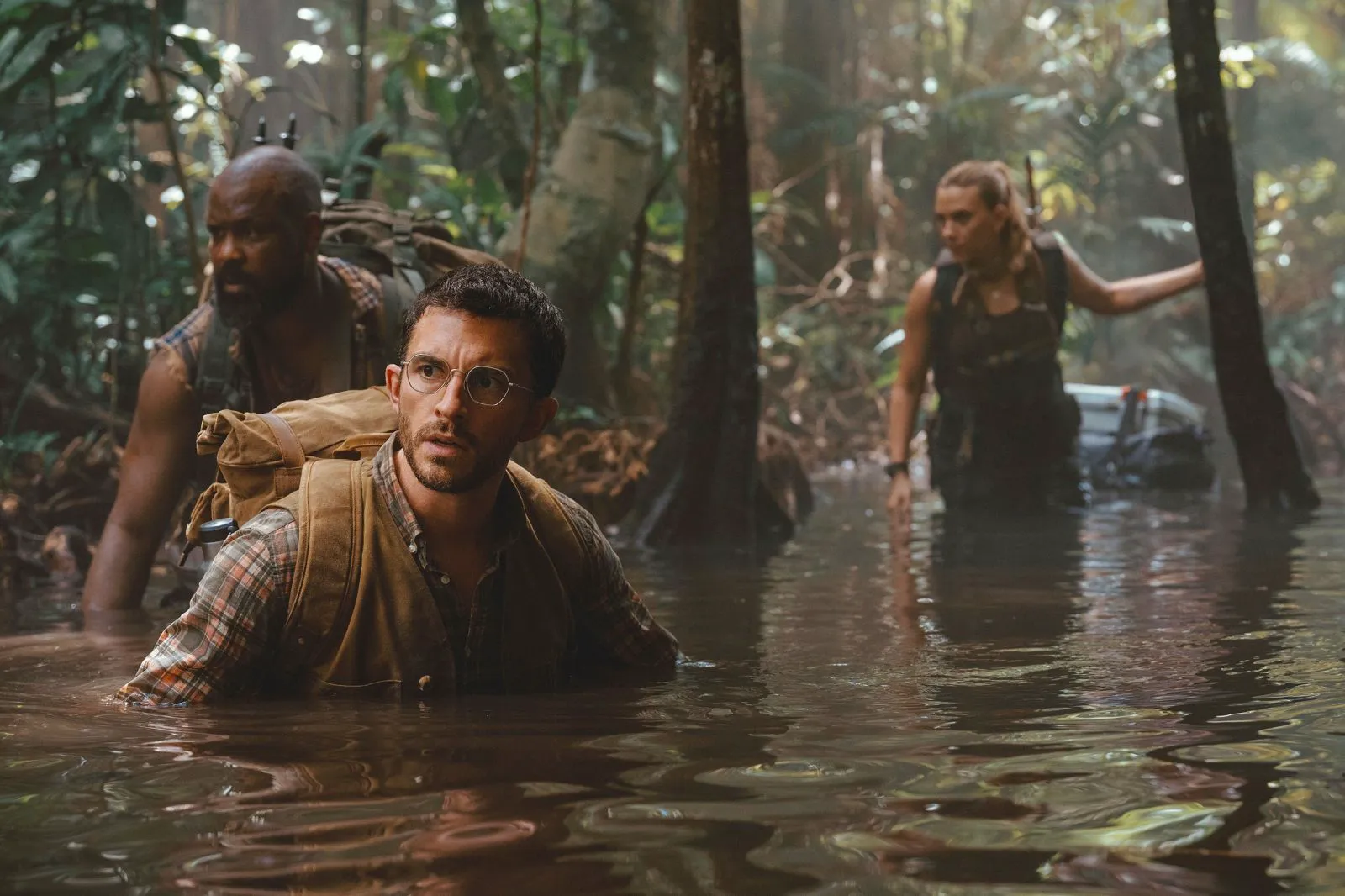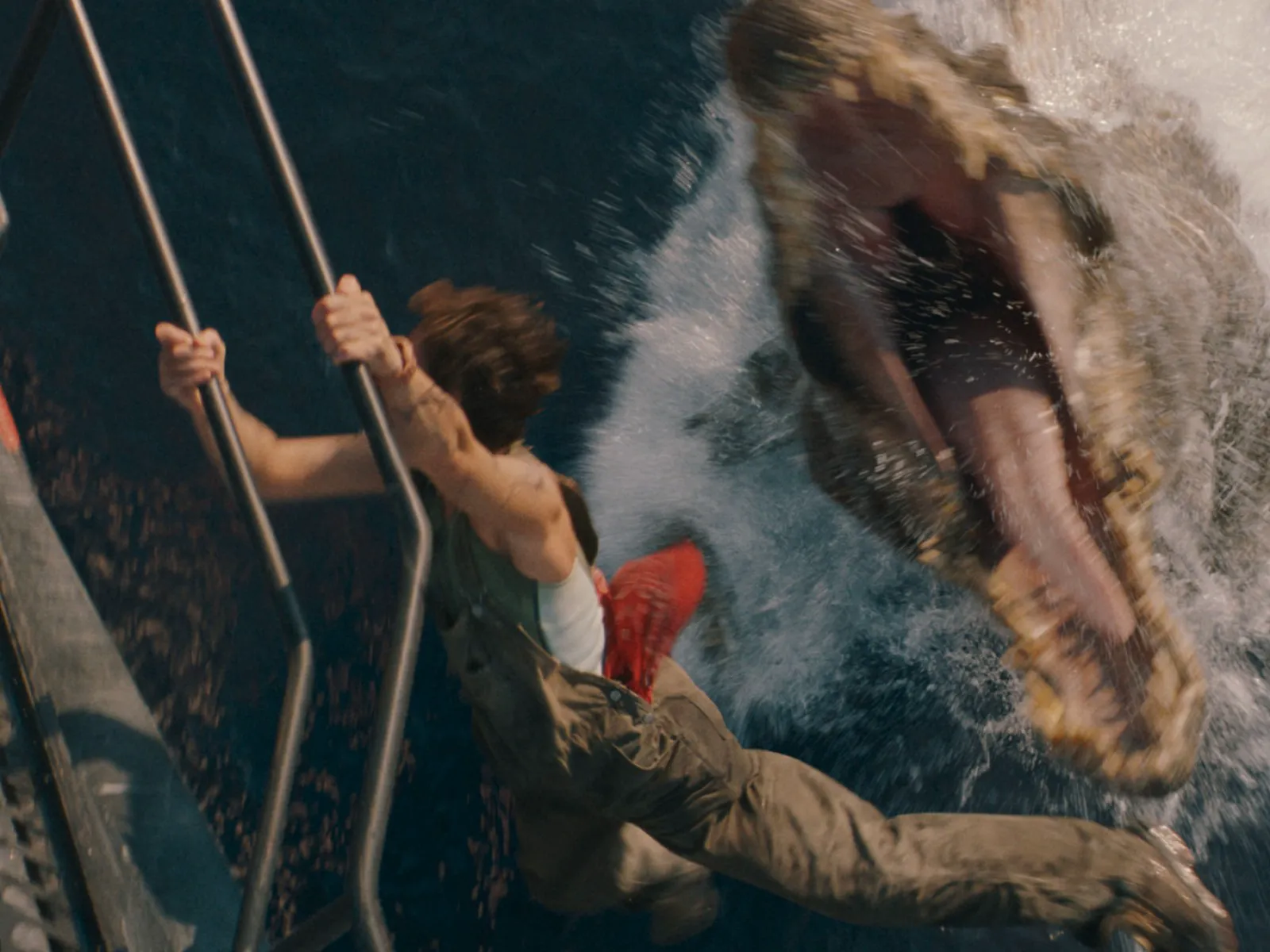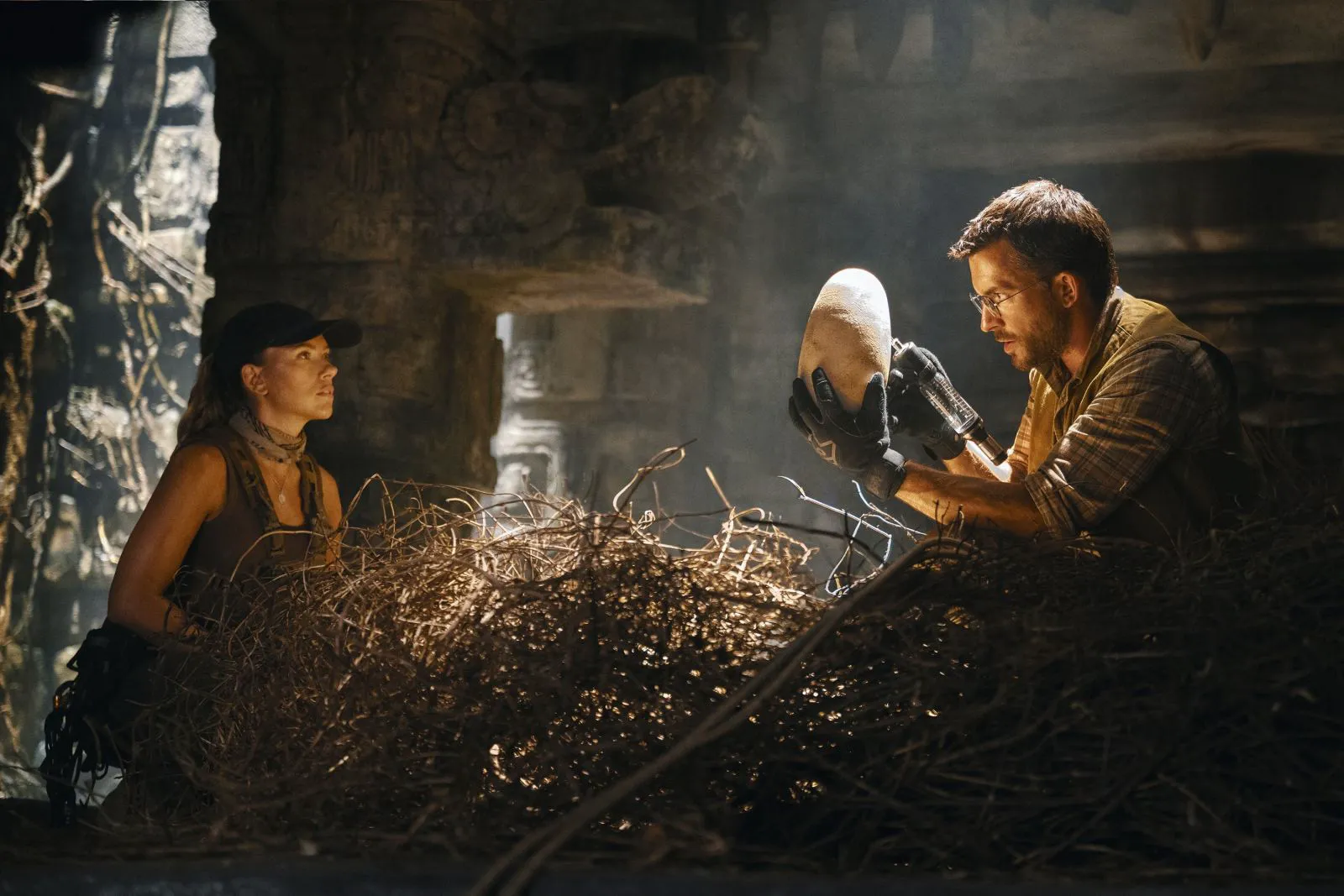In global release is the seventh feature film in the media franchise that Steven Spielberg started in 1993. In “Jurassic World: Revival,” under the careful directorial guidance of Gareth Edwards, dinosaurs return to audiences without fanfare or destruction (almost), but with a light, nostalgic touch, as if they were sent by airmail from a distant past. It’s a rare instance of a summer blockbuster feeling so warm. “Revival,” despite its name, doesn’t try to rebuild the universe but rather takes a step back—to where things were simpler: an island, a laboratory, toothy creatures, and a clear moral: humans shouldn’t play God.

Jonathan Bailey as Dr. Loomis in a still from “Jurassic World: Revival”
Five years have passed since the events of “Jurassic World: Dominion,” which concluded the story of Chris Pratt and Bryce Dallas Howard’s characters fighting for the freedom of dinosaurs. The reptiles, now scattered around the world, have faced a sad ecological reality: it turns out that the recreated prehistoric animals cannot survive in modern climates. However, some individuals live on several islands near the equator, where heat and humidity contribute to their prosperity. An expedition led by covert operations specialist Zora Bennett (Scarlett Johansson), hired by the slippery representative of the pharmaceutical company Krebs (Rupert Friend), sets off to one of these last refuges. The group’s task is not easy—scientists need DNA samples from several of the largest dinosaurs to synthesize a unique drug against heart disease.
Helping to obtain the reptiles’ blood is paleontologist Henry Loomis (Jonathan Bailey), who laments that the times when people stood in crowds in lines at museums and parks specializing in prehistoric animals are long gone. On the way to the island, the team receives a distress signal from a civilian vessel attacked by a mosasaur—a small yacht on which a seafaring father (Manuel Garcia-Rulfo), his two daughters, and one of their hapless boyfriends were sailing in dangerous waters. After one fierce chase, a dizzying crash, and a couple of deaths, the heroes find themselves on an island inhabited mainly by genetically modified dinosaurs—the product of inhumane experiments. Another task is added to the blood collection: to get to the abandoned laboratory and survive until the rescue helicopter arrives.

Still from “Jurassic World: Revival”
Nostalgia and Adventure
“Revival” feels like a nostalgic project from the first minutes. Zora and Krebs (the formal human antagonist) assemble a team of charismatic adventurers and somehow make it to the necessary location, revealing the simplified characters of each character mainly in dialogues along the way. Already on the island, the traditional franchise run from the reptiles begins, designed in the style of video game missions: extracting vials of dinosaur blood, the heroes face a variety of obstacles, fearlessly (almost) overcome them, and move on through the plot. Despite all the ordinariness (even for the average viewer) of what is happening on the screen, “Revival” does not bore you for a minute. It is really interesting to watch the adventures of Zora and her rapidly thinning squad, and the two-plus hours fly by in one breath.
Echoes of the Past
Thanks for that very nostalgic touch in the story should be given to David Koepp, the screenwriter of the first two parts of “Jurassic Park,” from where the author brought to “Revival” not only the spirit of the old school but also some scenes. However, Koepp, being an experienced writer, of course, does not engage in direct copying, although he reworks recognizable moments of the original trilogy for fan service. For example, the thriller episode with children hiding from mutated reptiles in an abandoned store or the trick scene with heroes anxiously making their way through tall grass will return fans of the franchise to the past. But Gareth Edwards deserves gratitude for the rhythm of the picture and the light atmosphere of humanism.

Scarlett Johansson as Zora in a still from “Jurassic World: Revival”
Themes and Monsters
The director of “Rogue One,” “Godzilla,” and, of course, the “Monsters” dilogy knows firsthand how to turn a story about giant monsters into a touching statement about the importance of non-interference in the lives of even long-extinct creatures. The traditional franchise clash between nature and scientific progress is replaced by an equally large-scale but much more organic critique of rampant capitalism, neatly hidden under a decent layer of local human drama. However, Edwards the humanist comfortably coexists with Edwards the hired employee of a large studio and does not try to turn entertainment cinema into a platform for loud statements.
But the picture became a testing ground for a new approach to demonstrating the titular reptiles. Thanks to the plot about experiments with genetic engineering, the creators were able to not limit themselves to the standard, long-boring set of dinosaurs but to show truly frightening creatures. The Tyrannosaurus, of course, has not gone anywhere and even participates in one of the most exciting scenes in the film. But the velociraptors in “Revival” were replaced by disgusting mutadons—bloodthirsty creatures that are equally adept at flying and moving on the ground. Distortus Rex—the widely advertised final antagonist of the picture—alas, appears only briefly, but the monstrous hybrid of Alien and Tyrannosaurus on steroids will definitely impress viewers with its appearance and leave an unpleasant imprint in their memory.
Final Verdict
“Jurassic World: Revival” is definitely not a new word or a revolution. Edwards shot an exciting, spectacular, sometimes touching, and to the necessary extent nostalgic summer blockbuster. The kind of titanic films that viewers remember from pre-pandemic times. And if there were a museum of genre artifacts in the world, then “Revival” would definitely take a place somewhere in the most prominent place, in a large domed hall, under a bright sign with red letters.